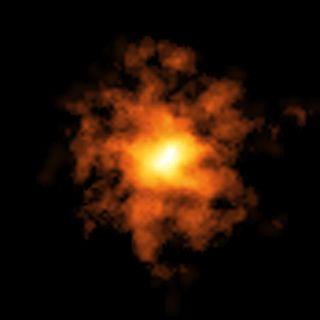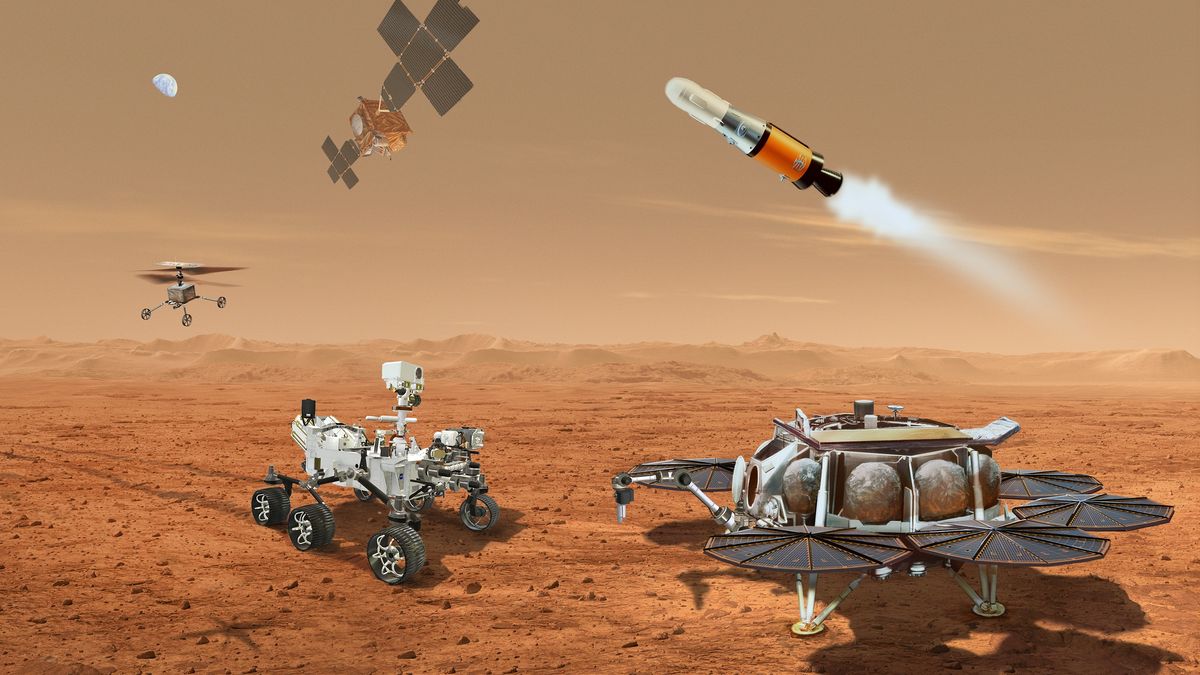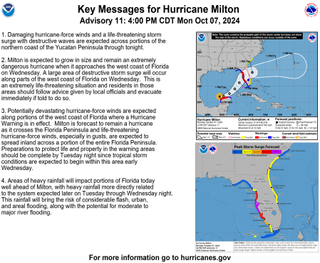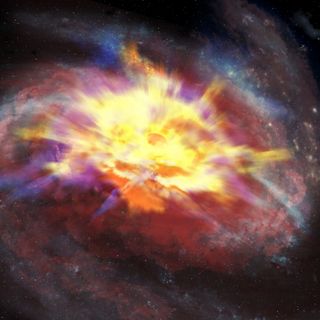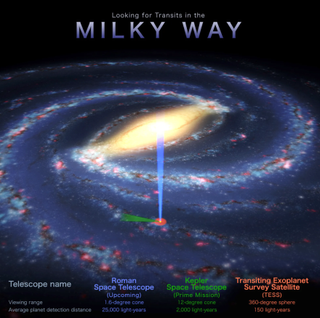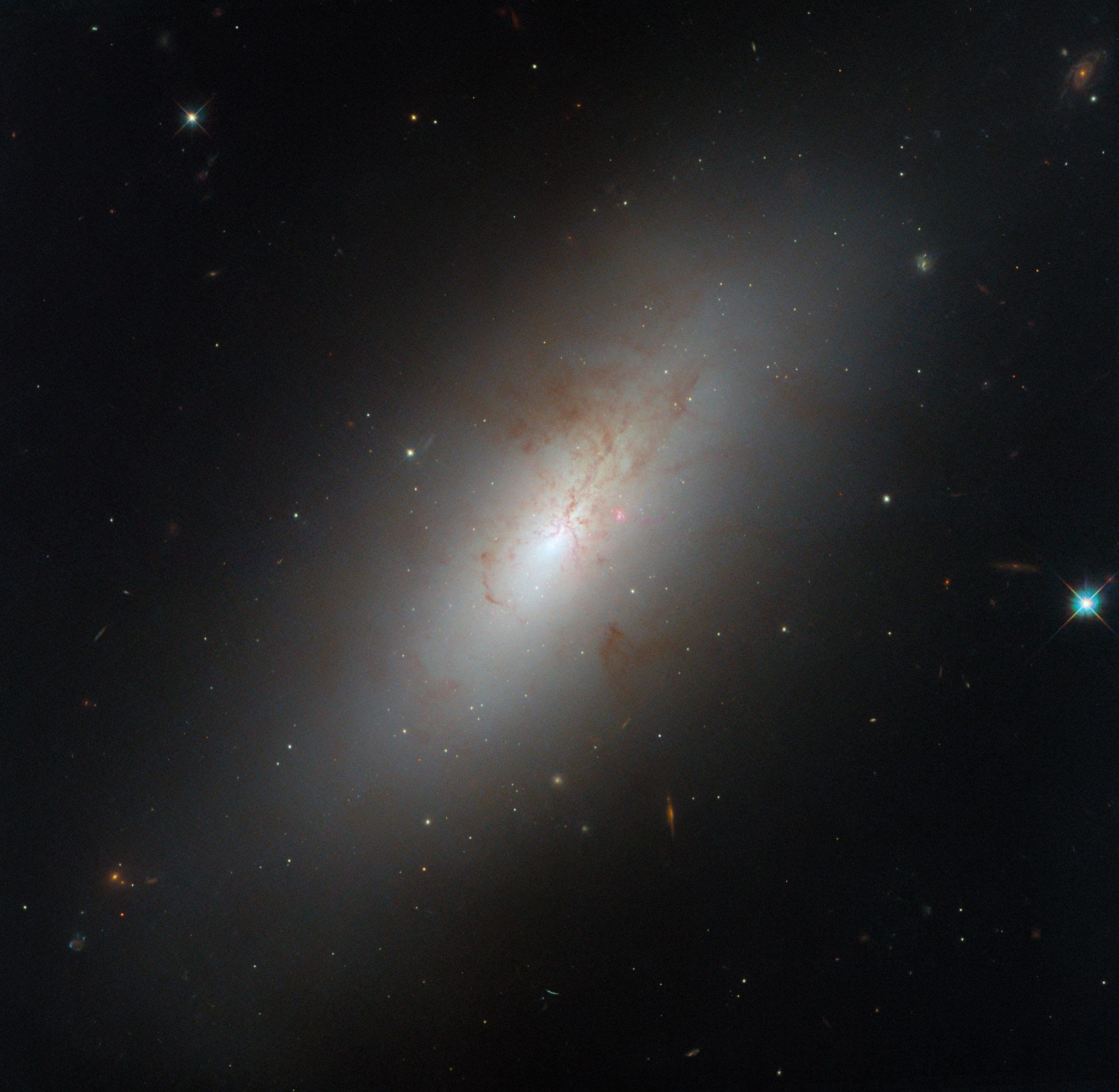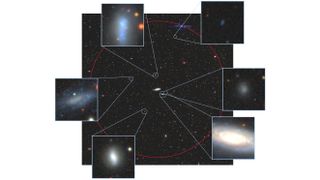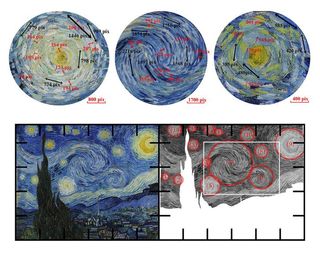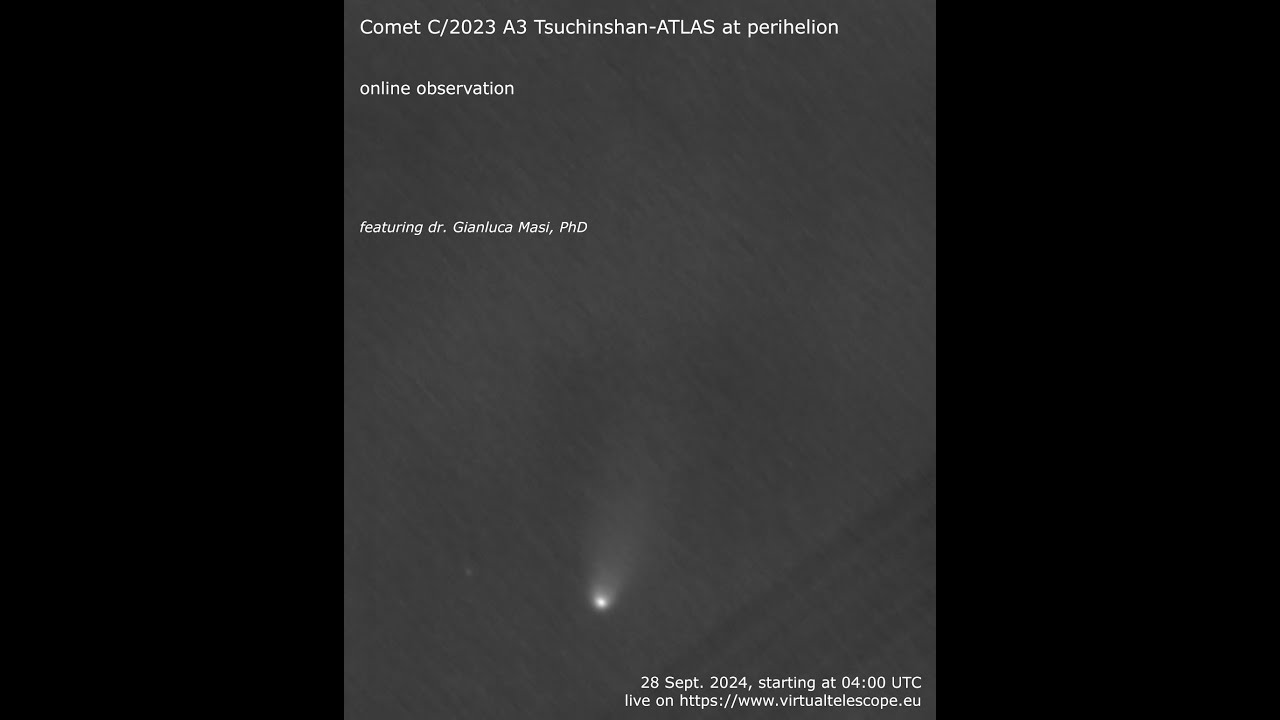The most distant and thus earliest rotating disk galaxy ever spotted has surprised astronomers and could challenge our theories of galactic evolution. Not only does it seemingly exist too early in the cosmos to be strongly spinning, the galaxy also shows hints of spiral arms similar to highly evolved “modern” galaxies like our own Milky Way. The galaxy, designated REBELS-25, is seen as it was just 700 million years after the Big Bang, at a time when astronomers expect galaxies to have been small and messy. Living up to its…
Read MoreTag: The Universe
Can Rocket Lab come to NASA’s rescue with new Mars sample-return plan?
NASA’s troubled Mars sample-return program may have a new lifeline, in the form of a proposal from private space company Rocket Lab to help save the mission. When the Perseverance rover landed on Mars in 2021, the plan was to follow up with a mission in the early 2030s that would retrieve the canisters containing samples of Martian dirt, rocks and atmosphere collected by the rover, and bring them to Earth for detailed study. The hope is that the samples will be able to tell researchers about conditions on Mars…
Read MoreSatellite images capture Hurricane Milton intensifying into Category 5 storm (videos)
In the heart of the Gulf of Mexico, a new hurricane is brewing. Hurricane Milton, now having intensified into a Category 5 storm, was caught in incredible space-based imagery from spacecraft such as the U.S. National Oceanic and Atmospheric Administration’s GOES-East satellite. Hurricane Milton comes just ten days after Hurricane Helene, the deadliest hurricane to hit the United States since Katrina, made landfall in the southeastern U.S. Milton poses a solid threat to the regions it will impact, and the National Hurricane Center is urging residents of Florida to take…
Read MoreAncient supermassive black hole is blowing galaxy-killing wind, James Webb Space Telescope finds
Using the James Webb Space Telescope (JWST), astronomers have spotted the earliest powerful “galaxy-size” wind blowing from a feeding supermassive black hole-powered quasar. The powerful wind is pushing gas and dust from its galaxy at incredible speeds, killing star birth in its host galaxy. This quasar, designated J1007+2115, is so distant that it is seen as it was just 700 million years after the Big Bang — when the 13.8 billion-year-old universe was just around 5% of its current age. Though this makes J1007+2115 just the third-earliest quasar ever seen,…
Read MoreNASA’s exoplanet hunter TESS spots a record-breaking 3-star system
Using NASA’s exoplanet-hunting spacecraft, the Transiting Exoplanet Survey Satellite (TESS), scientists have spotted a record-breaking triple-star system so tightly bound that it could fit comfortably between the sun and its closest planet, Mercury. The system, designated TIC 290061484 contains twin stars that race around each other once every 1.8 Earth days as well as a third star that orbits this pair once every 25 Earth days. This triple star system’s super-tight orbit, located just under 5,000 light-years away in the constellation Cygnus, the swan, makes it a record-breaker. The previous…
Read MoreHubble Observes a Peculiar Galaxy Shape
Hubble Space Telescope Home Hubble Observes a Peculiar… Missions Hubble Home Overview About Hubble The History of Hubble Hubble Timeline Why Have a Telescope in Space? Hubble by the Numbers At the Museum FAQs Impact & Benefits Hubble’s Impact & Benefits Science Impacts Cultural Impact Technology Benefits Impact on Human Spaceflight Astro Community Impacts Science Hubble Science Science Themes Science Highlights Science Behind Discoveries Hubble’s Partners in Science Universe Uncovered Explore the Night Sky Observatory Hubble Observatory Hubble Design Mission Operations Missions to Hubble Hubble vs Webb Team Hubble Team…
Read MoreChina unveils spacesuit for moonwalking astronauts (video)
China has strutted out its moon-landing spacesuit, unveiling its design in a ceremony Saturday (Sept. 28) in southwest China’s Chongqing Municipality. A technician put the spacesuit — which China aims to start using on crewed moon missions by 2030 — through its paces, showcasing various movements and gestures, including climbing the rungs of a ladder. The overall design of the moon-landing suit is inspired by traditional Chinese armor, underscoring the suit’s rugged and resolute appearance. It also features ribbons, which have always been an important element in the design of Chinese…
Read MoreThe Milky Way’s 2 biggest satellite galaxies are oddly lonely, study finds
The Milky Way’s system of small, orbiting satellite galaxies is quite unusual, a new 12-year study of other galaxies in the local universe has found. The Satellites Around Galactic Analogs (SAGA) survey is being conducted by a small group of astronomers to learn how the Milky Way and its little retinue of dwarf satellite galaxies compares to other galaxy systems. “The Milky Way’s satellite population is a unique combination of small satellites containing only older stars, and its two largest satellites, which are actively forming new stars,” says Marla Geha,…
Read MoreVan Gogh’s ‘Starry Night’ surprisingly adheres to the laws of physics, scientists find
Vincent van Gogh’s “The Starry Night” is undoubtedly one of the most famous paintings in the world, instantly recognizable for its vibrant colors and dramatic brushstrokes that create what appears to be a sky in motion. But did you know that its night sky depiction actually follows the real laws of physics? While the scene does take liberty in terms of what our eyes witness in the sky — we don’t necessarily see eddies dancing between the stars — scientists have determined those eddies indeed adhere to the laws of turbulent flow.…
Read MoreWatch spectacular Comet Tsuchinshan-ATLAS rise during the early hours of Sept. 28 with this free livestream
Comet C/2023 A3 Tsuchinshan-ATLAS at perihelion: online observation â 28 Sept. 2024 – YouTube Watch On Comet C/2023 A3 Tsuchinshan-ATLAS has been making quite a name for itself these past few weeks, providing a dazzling spectacle for early morning risers wishing to catch a glimpse of the “dirty snowball” as it streaks through the predawn sky. On Sept. 27, the comet will reach its perihelion — the closest distance to the sun. At 1:55 p.m. EDT (1755 GMT) the comet will be about 36.4 million miles (58.6 million kilometers) away…
Read More